Art and Complicity: How the Fight Against Gentrification in Boyle Heights Questions the Role of Artists


In Boyle Heights, even the air is contested territory. On the northwestern edge, on Mission Road between the 10 Freeway overpass and First Street, El Pato’s briney odor pushes against the inky fumes of a print shop, while a wall of freeway exhaust seals it all in. To the south, the red glow of Vernon and the industrial furnace that is Southeast L.A. burns so bright as to compete with the sunset. Unidentified toxic gasses drift in with the pungent smell of the Farmer John plant. In the sky, the smell of singeing animal meat, a whiff of blood dissolving in water.
On the ground, many Boyle Heights residents have dedicated their lives to this place fighting against a history of racism, gang violence, drug epidemics and poverty. For the last 20 years, residents and community organizations have pushed against the displacement of low-income and working-class families as Los Angeles moves forward with market-driven, revitalization efforts. Recently, they have turned their focus on studios and galleries that seek to carve out L.A.’s newest arts district in Boyle Heights.
Since PSSST, Boyle Heights’ newest gallery, announced its grand opening (originally scheduled for May 13) the conflict between the art space and local grassroots organizations has escalated to dimensions greater than each of the actual entities by bringing to question the direct and indirect complicity of artists and cultural spaces in the displacement of long-seated, working-class communities.
Boyle Heights has witnessed eastbound waves of gentrification that have transformed Echo Park and Highland Park into more affluent and white neighborhoods. The proliferation of artist studios and galleries has come to signal the arrival of additional enterprises that raise property values and cost of rent for businesses and housing tenants, eventually resulting in their displacement.
Newcomers, including artists, have been drawn to Boyle Heights by its rich cultural character -- forged from generations of Mexican, Japanese, Russian and Jewish immigrants relegated to the city’s eastern periphery -- as well as its cheaper rent and property in an increasingly unaffordable city.
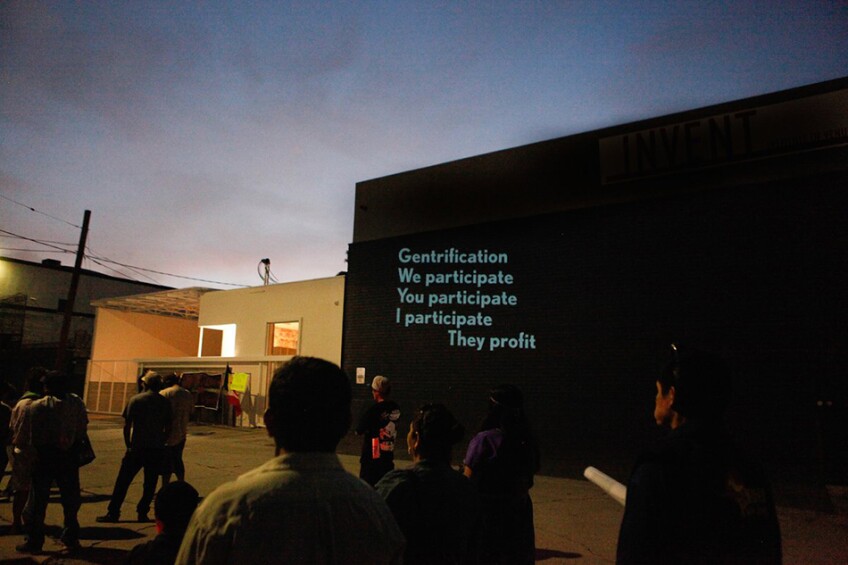
The Pico-Aliso: “People Have Left Their Lives Here”
When PSSST set up shop, they chose a community with a long history of organizing. Ground zero for this new Boyle Heights battle is taking place in Pico Gardens and Aliso Village (also known as “The Flats”) -- twin public housing projects that until 1996, together formed the largest housing project west of the Mississippi.
The demolishment of this housing project marked a key moment in an ongoing process of displacement in Pico-Aliso. While some residents were able to return to the neighborhood, hundreds of families were forced to move permanently as over 900 units of public housing were lost. Since then, this community and Boyle Heights in general, has experienced a continuous loss of public housing with revitalization developments by private investors, as well as the extension of Metro’s Gold Line into the eastside. Currently, there are plans to demolish 1,175 rent controlled units in Wyvernwood to build 4,150 market rate units.
Through these struggles to keep their homes, the Pico-Aliso community also made efforts to take back its streets from gang violence that raged for decades.

“It’s important to know that we have suffered a lot in this community. It’s a miracle that we are alive. We have seen families lose their children and husbands. We have seen violence from the police. Many people have left their lives here, ” says Delmira Gonzalez. A Boyle Heights resident for more than 35 years, she has worked for decades to make her community a safer, more livable place. She is currently a member of Union de Vecinos, a tenants rights organization that formed over 20 years ago during the demolishment of the Pico-Aliso housing projects.
She remembers how women organized to create safe passages to escort children to school and back home and how they occupied known drug-dealing spots by setting up impromptu barbeque grills and serving free food. She remembers that dealers, when interrupted, accepted plates of hot food before scurrying away to eat. Their hustle would not take place under the watch of mothers.
Street infrastructure such as street bumps was earned with the blood of children killed in roads and the labor of mothers like Gonzalez, who formed human chains, capturing the mayor’s attention. Streets, corners, alleys, curbs and sidewalks are saturated with lives, deaths and the determined attempt of residents to heal these spaces.
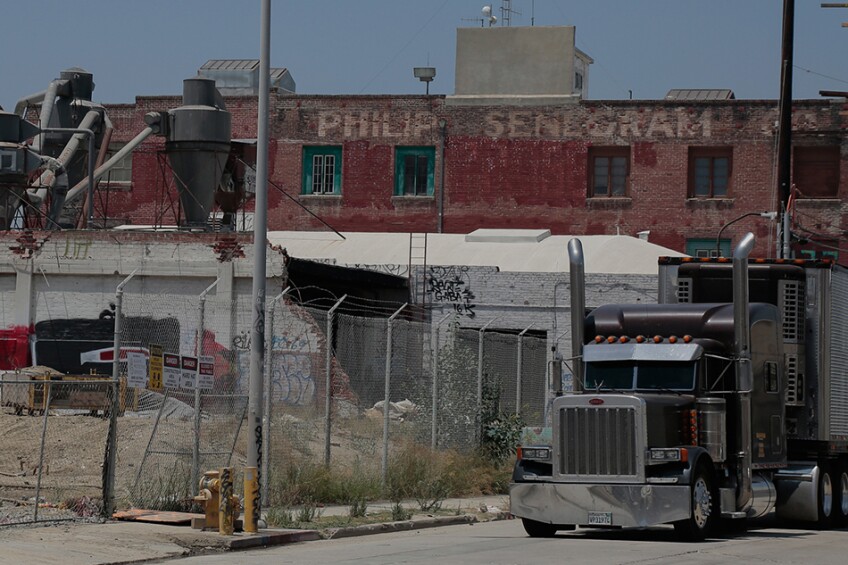
Today, one of the most standout reminders of this community’s hardships is Boyle Heights’ calcified industrial zone. The community now sits among the remnants of former warehouses and factories, like the skeleton of a creature that curled up and died many lifetimes ago. Longtime residents of Boyle Heights in some ways, consider themselves the keepers and guardians of these bones, for many still remember when they were animated and provided their families with humble but dignified sustenance.
Gonzalez and Ana Hernandez, another member of Union de Vecinos, recall the factories, warehouses and cold storage plants where families once worked. They remember that the building that PSSST now occupies on Third Street, was once a Halloween costume factory.
It was along these industrial zones that Father Greg Boyle and the mothers of Pico-Aliso organized walks that grew into marches for jobs for their children and husbands. Hence, these were the origins of Homeboy Industries and their famed mantra “Nothing Stops a Bullet Like a Job.” More broadly, jobs would help this community reclaim its streets.

So when galleries started moving into these warehouses in the mid-2000s, residents did not see it as a sign of new life breathed into their community, but rather many were cautionary of what that meant for their own future in this place. In their journey of recovering from decades of gang violence and drugs, they kept their eyes set on a new horizon.
“Our vision for Boyle Heights has been more jobs and better education,” Hernandez says.
However, that future now faces different challenges with the arrival of investors, speculators and more affluent residents. Among them, the arrival of artists.
“It’s ironic and sad. People have lost their jobs. They were pushed out of their neighborhood. And today arrives a new force that is transforming the zone of the factories to create a completely different culture. So not only are they actually stealing their work, but also their labor of love for creating a space for the young people. What the community created is now being occupied by others,” says Union de Vecinos member Leonardo Vilchis.
“We have struggled to make our community a better place. Now that we’ve cleaned up our community, it’s not fair for the galleries to just come here, like PSSST that gets to lease that space for free for 20 years. Its not fair,” Hernandez says.
She insists that she’d never heard of the PSSST before and had not seen a flyer about them in the community, much less invitations to dialogue. “They simply planted themselves here without taking our input into consideration or without any kind of community process.”
According to Vilchis, though there are other galleries that have been in Boyle Heights longer, spaces that have ignored the local community, PSSST has earned the reaction it is receiving. “What’s problematized this situation with PSSST more is the representation… they are saying that they are equivalent to the community. But that is not so.”
Vilchis says, PSSST entered the neighborhood in a moment when many more factors are coming into play, including increased awareness of gentrification and the formation of a tenants union and stronger solidarity among groups across the city that are also fighting gentrification. In addition to Union de Vecinos, the Los Angeles Tenants Union recently started an eastside branch in Boyle Heights, also serving El Sereno that is already organizing against gentrification and displacement.
PSSST: On the Altar
Most of L.A.’s newest arts district in Boyle Heights along Third Street is low-key to the point of seemingly deliberate invisibility. More than a cultural hub, it more closely resembles a service road without sidewalks or much lighting. Standing mute in large, long blocks of flat, windowless walls give little sign of the art complexes they actually are. For all anyone else knows, these are still cold storage warehouses, housing boxes of packaged meats ready for shipment. But on a weekday afternoon, the street is quiet, without beeping forklifts or growling trucks that might normally plow through industrial zones.
In fact, PSSST is one of the few buildings that resembles an art space. While they are certainly not the first gallery to set up in Boyle Heights, unlike their more discreet neighbors, they are the first to announce their intentions to establish themselves as an experimental art space in one of the neighborhood’s industrial enclaves.

Guarded only by a delicate gridded wire gate, PSSST is painted in pristine matte white. A set of clean concrete steps leads to what was once a loading dock and is now a small patio crowned with a tall white pedestal bearing a glass water dispenser of drinking water. Condensation embraces the cold surface. On a scorching summer day, it’s a vision of oasis, a promise and prize of arrival.
“The architecture is supposed to be accessible. It’s supposed to be inviting to the community,” says PSSST board member Adrian Rivas, who has strong grounding in the Chicano/Latino art community in L.A. He remains hopeful that PSSST can offer Boyle Heights residents and local artists access to a cutting-edge arts and gallery space.
“I’ve always heard, ‘Why can’t we have these spaces? Why can’t we show our work in spaces like that?’ We love our rasquache spaces too, but why shouldn’t we have a space like this?” he adds.
Most importantly, Rivas believes that PSSST could provide local artists with a space to experiment with new forms and practices. He notes that recently, PSSST’s first artist-in-residence, Guadalupe Rosales, invited L.A. Chicano artists and DJs to collaborate in a series of performances at the gallery where they were able to share the work they are known for, as well as to experiment.
According to PSSST founder, Jules Gimbrone, the importance of experimental art spaces for marginalized communities, particularly for queer artists and folk, is underscored by the June shooting at Pulse, a queer dance club in Orlando that left 49 young men and women dead. “These spaces for freedom of experimentation are rare for trans, youth and people of color. There’s no room for mistake as they are always performing with a lot of risk. We need to cultivate safe spaces.”
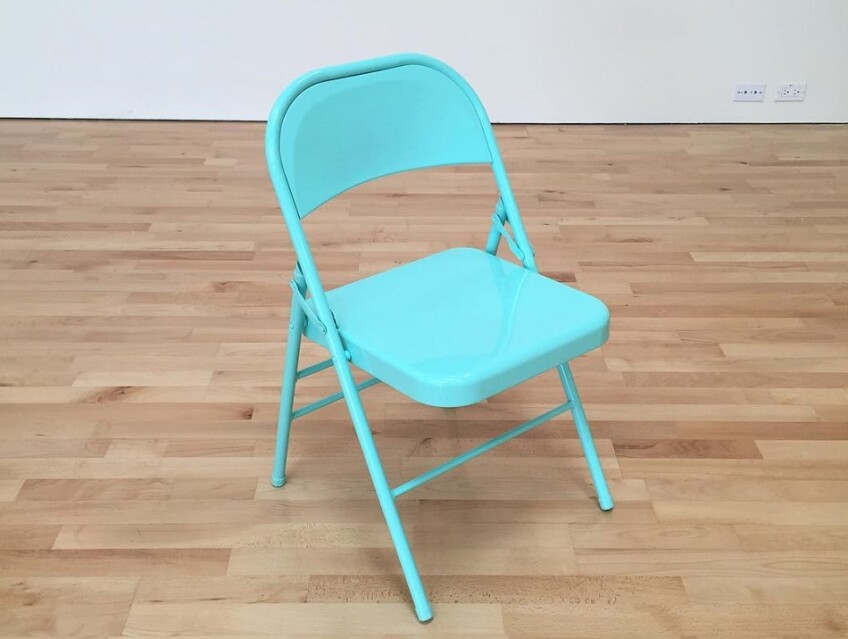
PSSST was founded as a queer-centered, experimental arts space, a principle that is also mandated by its agreement with their anonymous donor who invested $2 million to purchase and renovate the building and committed a free 20-year lease to the gallery.
Despite uproar from anti-gentrification Boyle Heights groups, PSSST members have insisted on their right to remain in Boyle Heights. “Do we have the right to exist? Yes, we do. And we need to be here. Shelter and food are not the only things that keep people alive,” Gimbrone says.
Rivas says he understands the strong criticisms against PSSST and is aware of its potential role in gentrification, yet warns of potential anti-LGBTQ sentiment and claims to already have seen signs of homophobia among protestors. “There’s no right way to do revolution,” he says, “but we have seen in past revolutions that queer folks are the first to go down.”
Part of PSSST’s primary impetus is to create queer-supportive spaces that are inclusive of all gender identities as well as groups of difference. According to Gimbrone, this queer positioning is what enables PSSST to be open to all of the communities of Boyle Heights and L.A., especially people of color. “I feel safe when there’s a mix. That comes from being queer and having to always engage with difference.”
On opening night of their first exhibition, “Everybody! Come Stand on the Altar!,” after two postponements, PSSST included an altar dedicated to the Orlando victims. A collage of their photos was placed on the patio, along with candles, flowers and other offerings that attendees were invited to bring in their honor. Notably, the majority of the shooting victims were young women and men of color. Photographs of their faces stood in contrast to the animated crowd at the show’s reception, that was not mainly of color. Someone placed a blond, blue-eyed Ken Barbie doll near the top tier of the altar.
However, at the foot of the display, a small mound of dirt was placed by Chicano artist Humberto Esquivel. In a gesture of solidarity, Esquivel brought chunks of dirt, terrones from his mother’s garden in Boyle Heights.

But for some organizers in Boyle Heights, creating queer-safe spaces is just not enough. For many of them, the claim to queer-friendliness in the name of redevelopment or revitalization is simply a tactic of gentrification known as pink-washing, similar to art-washing, both of which have been used to ignore or mask serious socio-economic issues that affect the livelihood of longstanding locals.
In an open letter to online arts magazine Hyperallergic, Ultra-Red, a sound arts collective and longtime ally of Boyle Heights’ Union de Vecinos, calls out PSSST and other galleries in Boyle Heights for doing both. “Now Pico Gardens residents have to fight against the art-washing and pink-washing of speculative real estate in their back yards.”
Dont Rhine, member of Ultra-Red and Union de Vecinos adds that “Using one’s identity to silence a community’s struggle is profoundly offensive.”
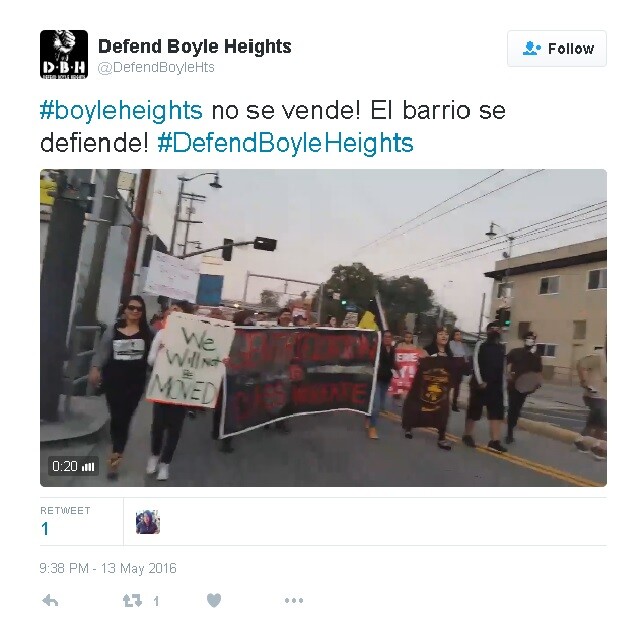
These two organizations, alongside Defending Boyle Heights and School of Echoes have joined to form the Boyle Heights Alliance Against Art-Washing and Displacement (BHAAAD). Collectively, they are taking an aggressive approach in making art galleries, studios and artists, particularly PSSST, accountable for their impact in the already transforming neighborhood.
In their efforts to make amends with locals PSSST says that, as an organization that considers itself radical, it embraces conflict and protest as a valid and important practice and is ready to embrace these into their own processes. However, this incorporation of organizing tactics into their mission statement has not been perceived by the organizations as an invitation or a genuine attempt to engage community, but rather as an appropriation of a process that community members have developed through decades of grassroots mobilization.
“They are stealing our culture, our ideology and our values that we have conserved for many years,” Hernandez says. “Now the gallery claims to have interest of community and radical art practice and invested in listening and process and collectivity and resistance and yet participating in the process... it divides a large sector. That separation is suspect. The material base of art challenges the faith in art.”
Reframing Art and Gentrification
Recent discussions among community-serving organizations and locals, have brought to question who participates in gentrification and in what way. They are thinking beyond typical views that signal “white hipsters,” real estate investors and speculators as exclusive perpetrators. Increasingly, everyone’s role in gentrification is being interrogated.
In the eyes of many organizers, artists (especially institutionally-trained artists) have to think about their practice and place in L.A.’s social fabric as a privilege that must be negotiated carefully within the city’s socio-economic and political contexts. More specifically, artists should reconsider how their work will impact communities, for better, worse, or both.
“I don’t believe that artists are storm troopers that come in to gentrify a neighborhood. We see value in places that others don’t see. Then we become exploited when developers move in. But as an artist, I have to ask, how do I not become part of this process,” says longtime Boyle Heights resident, artist and printmaker, Daniel Gonzalez.

Gonzalez currently works out of his studio in Highland Park, a neighborhood that has seen some of the most active redevelopment and massive displacement of families. “Displacement is violence. It’s a violent act, with tragic repercussions,” says Gonzalez, who has observed a sharp increase in homelessness in the area.
In addition, many Chicano artists and organizers have expressed concern over the direct and indirect role community-based arts institutions such as Self-Help Graphics have played in the gentrification of Boyle Heights. Most recently, a community dialogue hosted by Self-Help Graphics on July 2 was interrupted by members of Defend Boyle Heights and Union de Vecinos. In a detailed statement published following the meeting, Defend Boyle Heights called attention to SHG’s past, and among many items, highlighted presumed close ties between some of its administration and the Fifteen Group’s acquisition of the Wyvenwood apartments in Boyle Heights that could potentially displace over a thousand rent-controlled households with market rate units.
However, Self-Help Graphics assistant directors assured artists and locals that they do not support gentrification and have the community’s best interest in mind. In addition, Self-Help Graphics director of programs and operations Joel Garcia said that he believes investment and redevelopment is necessary in communities like Boyle Heights.
“We want to reframe how we engage gentrification,” Garcia continued.
Though some see this public back-and-forth as problematic, others see it as a healthy process. “Its bringing a good dialogue that all cultural institutions and nonprofits need to ask themselves. ‘How does it benefit community? What kind of relationship to they have? Are they part of healthy growth or are they going to strangle the community to death?'” says Daniel Gonzalez, who attended the meeting at Self-Help Graphics.
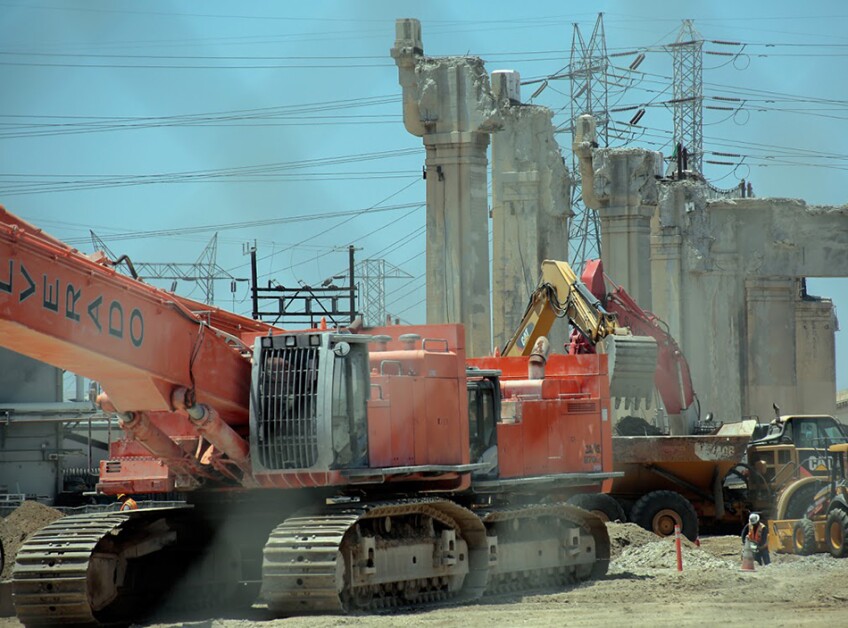
Yet as community talks continue over weeks and months, as positions are clarified and guidelines drafted, the threat of displacement is not diminished, as development projects move forward and the arts district receives attention and accolades from the New York Times and art world insiders. “We are still waiting to see an example of where an arts district didn’t displace a community. The designation of an arts district is a tool of development. We don’t have time for artists to figure out how they feel,” Rhine says.
Despite the community dialogues, Delmira Gonzalez sees little potential for co-existence between art galleries and the longstanding community. “We have 7,000 people here that need housing. And on top of everything, our bridge gets knocked down and we have a homelessness problem. Why do we need to accept them? Why do we need to have compassion for them? The answer is ‘no.’ The answer is 'get out.’”
“People often think that gentrification is inevitable and that we need to negotiate the terms of our defeat. But we don’t. Saying ‘no’ works. By saying ‘no,’ I’ve seen this community get stronger and stronger. What I’ve learned in walking with women is that the impossible has limits,” Rhine says.

Ultra-Red describes this action as “The art of resistance,” a practice that, like traditional and institutional art, has its own set of aesthetic and operational frameworks. One unique characteristic of this anti-gentrification movement in Boyle Heights, as well as in other parts of the city, is the strong involvement of institutionally-trained artists, graduates of prominent art schools who are equipped to use the language of arts but are pushing towards radical practice that breaks down institutional arts, especially as they are tied to a capitalist market.
According to Rhine, the pressure that artists are experiencing from community groups and other artists that support anti-gentrification movements clarifies their role in gentrification. “In trying to establish a fine arts space within the professional sector, it’s next to impossible to start or maintain that space without direct complicity in speculative development. It’s impossible to escape complicity,” Rhine says.
Furthermore, this mounting pressure points to what Rhine and other activist artists believe will be the necessary future of art. “So if an artist is challenged by the communities facing displacement to act in solidarity, then the artist has increasingly no choice but to be complicit fully or to invent a different kind of art. It means changing what art is and it’s not going to be what we learned in school or see in galleries or what is celebrated in art history. It is going to be a new art that is not necessarily going to be recognized as art.”
He adds that while artists experience much anxiety over the uncertain future of what is being demanded of them in this increasingly polarized and tense context, they have much to gain from letting go of their notions of what art is, how it should be made, by whom and what spaces it should be in. “We are in a moment in which artists are grappling with that. Artists have a lot to gain in terms of solidarity, community, meaning, purpose and aesthetic pleasure.”
Top image: Anderson and Third Street deconstruction. | Photo: Timo Saarelma.
Check out KCET's City Rising a film documentary series which examine issues of gentrification and displacement across California. Sign up to be informed of updates.


